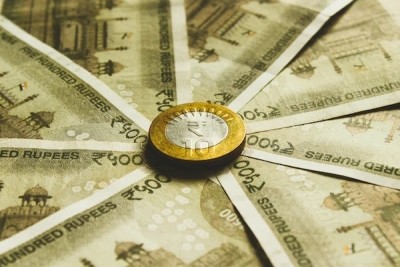
Chennai, The slow economic recovery of the low income households post Covid-19 pandemic has resulted in the overall economic recovery of the country, said Kotak Securities Ltd.
In a research report, Kotak Securities said, post Covid-19 pandemic, India's economic recovery seems to be lukewarm on a three-year compounded annual growth rate (CAGR) basis.
The major economic parameters reveal slow post-pandemic recovery, with gross domestic product (GDP), goods and services tax (GST) collections, electricity demand, credit growth and auto sales growing somewhat slowly as against the expectations.
Kotak Securities attribute the weaker-than-expected recovery to the slow 'repair' in the income of low-income households.
"It may take a few more quarters for growth to recover to full potential," the report said.
India's 1QFY23 GDP grew at 1.3 per cent CAGR over the past three years, despite growing 13.5 per cent year-on-year (YoY).
According to the report, the survey-based employment data suggests that India has not completely recouped all the jobs lost during the pandemic.
"While formal job creation has been robust, the employment conditions remain frail in the lower-income groups, as employment-seeking under MNREGA is yet to reach pre-pandemic levels," the report said.
It may take a few more quarters for employment and income to recover to pre-pandemic levels.
The six month GST collections in FY23 logged a growth of 13.8 per cent on a three-year CAGR basis.
The high wholesale price index (WPI) in the last couple of years may have helped higher GST collections in this period. The expectation is that the WPI will sharply trend lower over the next several months.
Collections have grown at a higher pace than nominal GDP growth rate (9.5 per cent on a three-year CAGR), suggesting some widening of the tax base.
On the industrial growth front, India's indicators look rosy on a yoy basis but lose their sheen when examined on a three-year CAGR basis.
In particular, diesel consumption in 5MFY23 declined by 0.4 per cent and electricity demand grew at 4.7 per cent on a three-year CAGR basis.
Meanwhile, gross fixed capital formation (GFCF) has seen a muted 2.2 per cent CAGR over the past three years, despite strong government and household investment.
Household investment in real estate was a key driver, seeing a 14 per cent three-year CAGR in major cities, while the Central government capex increased at 23 per cent three-year CAGR. As such, industrial production and private-sector investment are yet to show a meaningful recovery.
Private consumption has not seen much of a recovery, with private final consumption expenditure (PFCE) growing at 3.2 per cent on a three-year CAGR basis, Kotak Securities said.
The shallowness of the recovery is prominent in the automobile sector, especially in two wheelers as their sales volumes have declined at six per cent CAGR over the past three years (5MFY23 over 5MFY20), while hatchback (entry segment) volumes have increased at 3.2 per cent CAGR in the same period.
Air passenger traffic has also not seen a complete recovery in 5MFY23.
"We note that retail credit growth has been resilient at 15.3 per c ent CAGR, but not enough to pick up the slack in overall bank credit growth," Kotak Securities said.


.jpeg)

